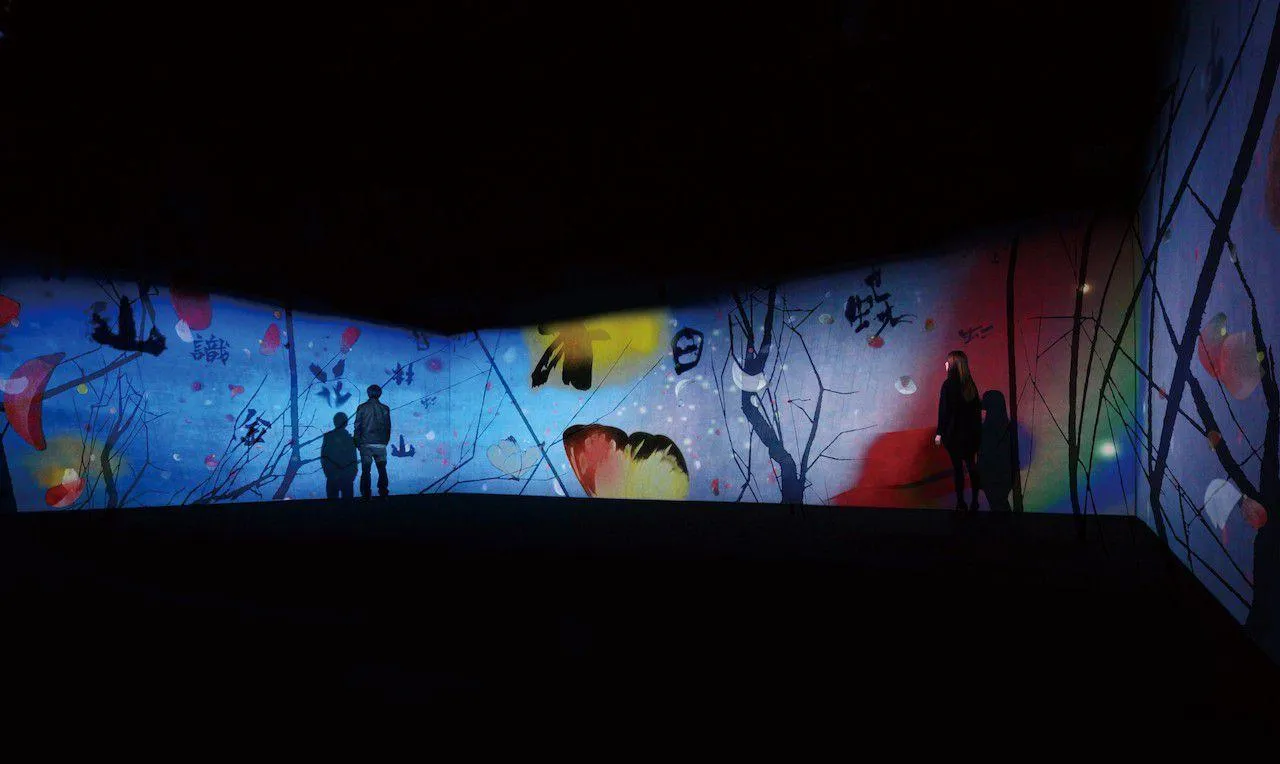Alternative realities through new media art
تم النشر في Jakarta Post , Oct 18, 2012
Jakarta PostCarla Bianpoen, Contributor, Singapore | Art and Design | Thu, October 18 2012, 7:44 AM
As the technical revolution continues with ever evolving digital innovation, it seems that video art and digital art, which have been gradually being accepted as valid mediums of artistic expression, are just the tip of the iceberg.
This is being made clear at the exhibition of new media art from the past 13 years by nine international artists at Ikkan Gallery Singapore, showcased under the title “The Experience Machine” until Oct. 27.
When visiting the show at Ikkan Gallery, Tanjong Pagar recently, I was amazed and overwhelmed by the surreal landscape that I was allowed to co-create in, in what I found was the most inventive and fascinating work made by the Tokyo-based teamLab with chief executive officer Inoko Toshiyuki (b. 1977) . “What a Loving and beautiful world” was invented by teamLab, whose hundreds of interdisciplinary members from various countries have cooperated with Sisyu, a calligrapher who explored the power of emotional and visual evocation of Japanese ideograms, with accompanying music from Hideaki Takahashi.
While interactive work has been around for some time, this installation work differs in that it literally transports the viewer into a self-created natural world, rendering the feeling of being a creator of sorts.
In a space specially constructed for the purpose, everything is initially black, as was the Earth before its creation, until kanji signs randomly fall from the four walls through the touch or shadow of our hands. At the touch of the sign for the flower, the entire space is filled with flowers. If the sign of bird comes down together with that for a tree and is touched simultaneously, the signs will erupt with a flight of birds that automatically occupy the branches of the emerging trees. When touching the character for wind, all things on the screen will be swept away including the character, and when one happens to touch the character for the butterfly and flower at the same time, the butterfly automatically seeks the flower. The characters are programmed with an intelligence of their own, says gallery owner Ikkan Sanada, who moved from New York to Singapore less than a year ago.
As I stood in the dark space before the falling kanji signs in a dramatic night landscape illuminated by the moon, it was as if I was experiencing the very story of creation as told in the Book of Genesis. The difference of course was that the images evoked by the touch or shadow of the human hand were ephemeral, disappearing immediately as we touched another sign, perhaps hinting at the transient nature, the impermanence of things. In the same sense, requiring a human hand to evoke the images could also be understood as the role humans must play in the preservation of the natural environment.
The work was awarded the Architecture, Art & Culture Award at the international contest ReVolution during Laval Virtual, Europe’s largest virtual reality salon in spring 2012.
Another piece of work by teamLab in the show visualized their suggestion that Asian art appreciation differs from that of Western art. In “Flower and Corpse Glitch” animation, turning a 2D Japanese painting into a computer generated 3D virtual space, teamLab suggests that ancient Japanese visualized a picture from inside, blurring the subjective and the objective, without a focal point, whereas paint in the West considers the rules of perspective, geometry and objectification.
Similarly, the absence of a focal point is also seen in the photographic view of The Last Judgment in Cyberspace by the Chinese artist Miau Xiaochun, where the artist in fact enters the famous painting by Michelangelo, re-inventing it by transforming the 2-D into computer-generated digital scenes with depth and volume while eliminating the focal point and allowing the viewer to see the scene from various angles. He once said that it was his way of proposing equality. The repeated use of the same model “automatically abandons the distinctions between high and low, left and right, good and evil, honorable and humble, east and west, ancient and modern.”
Other works in the show include Enclose by Philippine artist Bea Camacho, Home Movie by Jim Campbell, ASCII History of Moving Images by the Ljubljana, based artist VukCosic, Dust Storm by John Gerrard from Ireland, Vermeer study: Looking Back (mirror) by the Japanese artist Morimura Yasumasa, Something is boiling by Ben Rubin from the US and Endless victory by John F. Simon Jr, US.


